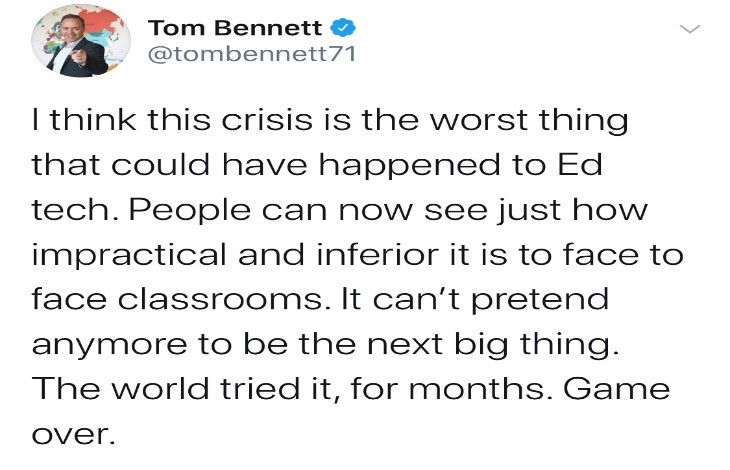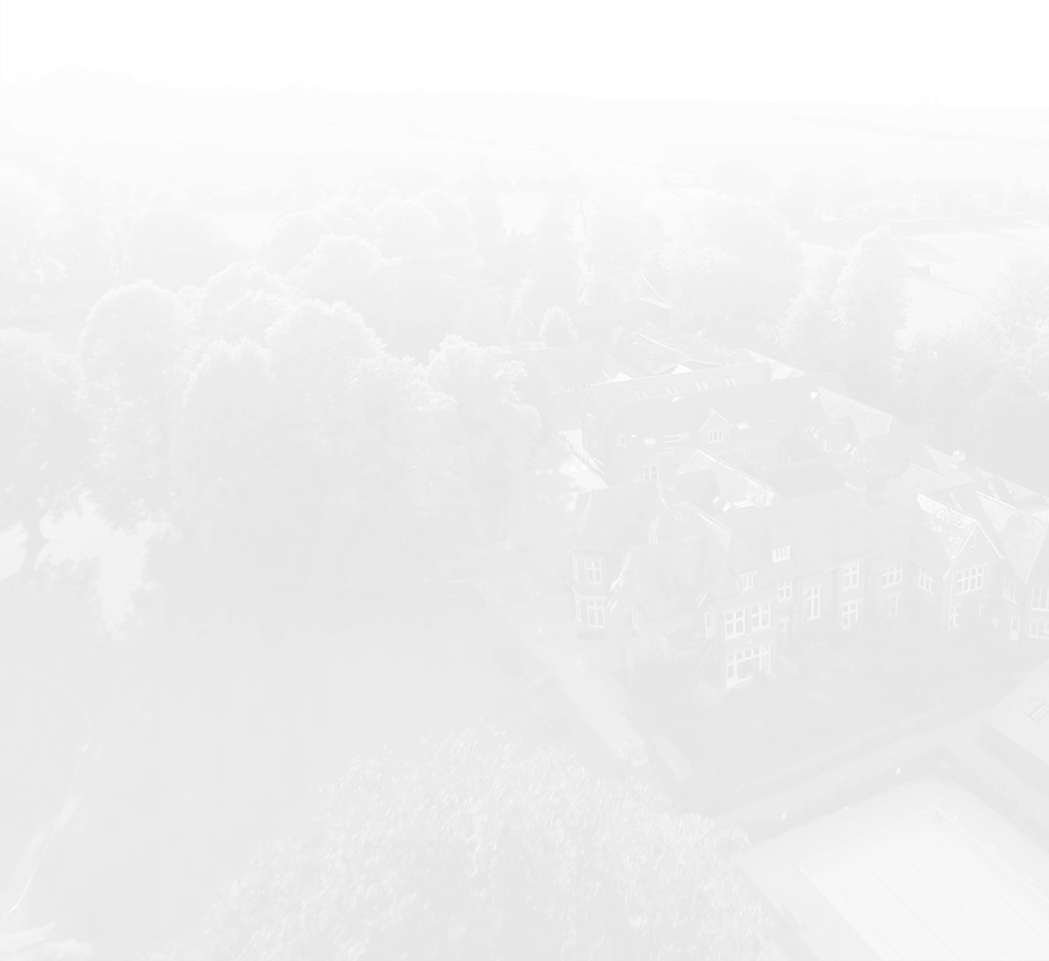

The virtual teaching and learning experience

Tom Bennett is one of the founders of researchEd, a well-respected organisation with the aim of bridging the gap between educational research and practice. Tom is also an advisor on classroom behaviour and behaviour management strategies for the Department of Education, and the editor of the researchEd magazine. He is not a nameless keyboard warrior on Twitter. His tweets are nuanced and well thought-through. This tweet, therefore, made me think.
At the point I read this tweet I had spent the morning between Google Meets and creating resources for boys to complete at home. I was also looking ahead to an afternoon of filming PE videos whilst my girlfriend acted as camera lady to a progressively shorter-tempered ‘lead actor’ who was growing frustrated at his inability to flick a tennis ball into a wheelie bin with a hockey stick. I was confident that what Moulsford was doing was brilliant, the best alternative to being in school. I had bought into our philosophy and I was ready to defend it to the hilt.
In order to look at Tom’s suggestion I needed a sample size greater than n=1. I thought Moulsford was doing a great job, but maybe we were the exception to prove his rule. Luckily my girlfriend is also a teacher, I am a governor at a primary school and both my cousins are still at school. I had some research to do and some phone calls to make.
It would seem Tom had a point when I expanded my sample size. My girlfriend was using an online platform she had not been introduced to before lockdown. She was not familiar with it and was expected to instruct 6 year olds with a wide variety of ICT set-ups how to use it. The school where I am a governor had a wide spread of IT literacy and different set-ups to circumnavigate, while my 16 year old cousin was simply told that her last day at her secondary school had been and gone. No goodbyes. No exams.
To give greater context to Tom’s tweet, ‘Ed Tech’ debates on Twitter can get pretty heated. There are certainly a large number of those who fully sign up to the notion that it is the next big thing. It is easy to get drawn in by the idealistic view that ‘Ed Tech’ companies can portray through their videos and posts. They always seem to have excellent WiFi connection and crystal clear screens that demonstrate everything to be incredibly simple and intuitive. I have been in education for a mere six years and yet I have been around the block enough to know this certainly is not always the case.
Ultimately though I think our setup at Moulsford is brilliant. The biggest factor in this, though, is not the technology we have chosen to use. It is the time, energy and money that the school has put into the Google Classroom system outside of lockdown. We are able to rely on every boy to have an iPad, because the school provides it. We know that every boy is familiar with Google Classroom and the whole Google suite of applications because we use it in school already to complement our face-to-face teaching. These are assumptions that we are able to make as teachers and, as a result, we can devote our time to excellent resources and creative lesson content during lockdown.
So Tom, I think your tweet should read:
This crisis is the worst thing that could happen to those schools who have not embedded virtual learning into normal school life. Teachers are brilliant, and for those schools it is demonstrating that underprepared virtual learning bears no comparison to what their staff provide every day. Yet, for those schools who have embraced and evolved with virtual learning over a period of years this crisis has enabled them to fulfil it to it’s best potential and will lead to teachers who are even more confident and better able to use it to complement their excellent in-class teaching.
...but it would certainly be a struggle to condense that down to 280 characters.





























